From costs to how effective they are, the pros and cons of different birth control methods
Birth control pill A woman takes a hormone pill every day that stops ovulation, so no egg is released. SUCCESS RATE: With typical use, eight women in 100 become pregnant in one year. With perfect use, fewer than one woman in 100 will become pregnant in one year. PROS: Provides non-stop protection against pregnancy. You’ll […]

Condom
A latex sheath (called a rubber) covers the penis and collects the semen, preventing sperm from entering a woman’s vagina. A backup form of birth control could be used, such as birth control pills, Depo-Provera or Implanon.
SUCCESS RATE: With typical use, 15 women in 100 will become pregnant in one year. With perfect use, two women in 100 will become pregnant in one year.
PROS: It provides good protection against most STDs, including HIV, the virus that causes AIDS. Plus, it’s cheap, easy to carry around and can be bought at any drugstore without a prescription.
CONS: It can fall off or break if it’s not put on correctly; likewise, it can leak if not withdrawn carefully. Condoms must not be used with any oil-based lubricants like Vaseline or massage oil. Some people are allergic to the latex but plastic condoms are available.
HOW TO GET IT: At drugstores and supermarkets; costs 50¢ to $2 each. They are often available free at family planning or health clinics.
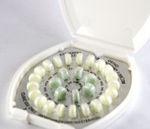
Birth control pill
A woman takes a hormone pill every day that stops ovulation, so no egg is released.
SUCCESS RATE: With typical use, eight women in 100 become pregnant in one year. With perfect use, fewer than one woman in 100 will become pregnant in one year.
PROS: Provides non-stop protection against pregnancy. You’ll know exactly when your period is going to come. You’ll have less PMS and cramps.
CONS: Offers no protection against STDs including HIV, so you must use a back-up method. It can cause side effects such as nausea, headaches, moodiness. Some women have no side effects, but usually side effects go away after a few months. You need to remember to take the pill every day at the same time.
HOW TO GET IT: Through a prescription from a doctor or a family planning clinic; the cost runs $15 to $40 a month plus the cost of the medical visit. Many clinics have sliding scale fees—so an exam and the pills may be free or low cost.
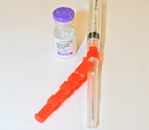
Depo-provera injection
A woman gets a shot of the hormone progestin in her arm or hips every three months. Like the Pill, Depo-Provera prevents pregnancy by keeping the ovaries from releasing eggs.
SUCCESS RATE: With typical use, three women in 100 become pregnant in one year. With perfect use, fewer than one woman in 100 will become pregnant in one year.
PROS: Once you get the shot, you don’t have to think about it for another three months.
CONS: You have to see a doctor for another shot every three months. Offers no protection against STDs including HIV. Some women have weight gain and irregular periods. Can cause bone loss, which is generally reversible after stopping.
HOW TO GET IT: Requires a medical visit every three months with a doctor or family planning clinic; the cost is about $35 per shot, plus the cost of the office visit. Many clinics have sliding scale fees—so an exam and the shot may be free or low cost.
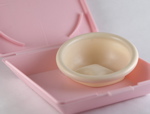
Diaphragm
A woman uses spermicide to coat this dome-shaped rubber cup with a flexible rim. Then she places it inside the vagina to cover the cervix, where it blocks sperm.
SUCCESS RATE: With typical use, 16 women out of 100 become pregnant in one year. With perfect use, six women out of 100 become pregnant in one year.
PROS: It can be put in place up to six hours before intercourse and can stay there for 24 (though fresh spermicide should be applied without removing the diaphragm each time you have intercourse). It is usually not felt by either partner during sex.
CONS: Won’t protect against STDs including HIV; can increase the risk of urinary tract infections and toxic shock syndrome. Can be messy (because of the spermicide) and clumsy to use until you get the hang of it. Also, it has to stay in place for six hours after intercourse and then needs to be washed thoroughly with soap and water. Gaining or losing more than 20 pounds might mean you need a different size.
HOW TO GET IT: Through a prescription from a doctor or family planning clinic; the cost is $30 to $40 plus medical exam and fitting. The spermicidal jelly, cream or foam costs from $8 to $15 a tube. Many clinics have sliding scale fees—so an exam and the diaphragm may be free or low cost. A diaphragm will last about a year.
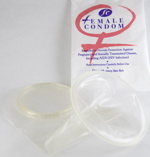
Female condom
A thin plastic sheath, shaped like a sock with flexible rings at each end. The ring at the closed end holds the pouch in place inside the vagina, while the ring at the open end remains outside the vagina. The pouch collects semen and prevents it from entering the vagina. It should be used with a spermicide or another form of birth control such as the Pill, Depo-Provera or Implanon.
SUCCESS RATE: With typical use, 21 out of 100 women will become pregnant. With perfect use, five out of 100 will become pregnant.
PROS: Protects against STDs, including HIV, and you can get it without a prescription. Also, you can insert it up to eight hours before having intercourse.
CONS: The outside ring can slide inside the vagina during intercourse. Can be awkward to use; must be removed right after intercourse, before you stand up, to prevent semen leakage.
HOW TO GET IT: Buy it at drugstores or supermarkets or get it from family planning clinics; costs $2 to $4 each.
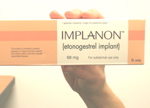
Implant (Implanon)
A small plastic tube is inserted under the skin of a woman’s upper arm, and the tube releases hormones that prevent pregnancy.
SUCCESS RATE: Less than one woman in 1,000 becomes pregnant in one year.
PROS: It protects against pregnancy for up to three years—without you having to do anything.
CONS: Doesn’t protect against STDs including HIV; may cause irregular periods, nausea, headaches, weight gain. Some women may be able to see the rods under the skin.
HOW TO GET IT: Requires a medical visit with a doctor or family planning clinic; the cost is $500-$800, plus the cost of removal. Many clinics have sliding scale fees—so Implanon may be free or low cost.
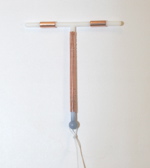
IUD
A doctor inserts a small t-shaped piece of plastic into a woman’s uterus. The two types, one that releases hormones and another that is covered by a copper wire, work in different ways to prevent pregnancy.
SUCCESS RATE: Fewer than one woman in 100 become pregnant in one year.
PROS: It protects against pregnancy for five to 10 years without you having to do a thing. The copper type is an option for women who cannot use a hormonal method of birth control.
CONS: Need to check the string every month to make sure it is in place. Doesn’t protect against STDs, including HIV; may cause irregular periods.
HOW TO GET IT: Requires a medical visit with a doctor or family planning clinic; the cost is $250 plus the cost of having a doctor insert and remove it. It’s a lot of money, but it lasts five to 10 years. Many clinics have sliding scale fees—so an IUD may be free or low cost.
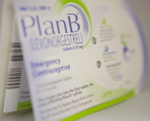
Emergency contraception
It is an emergency method of birth control and should not be used as your regular birth control method, but can be taken within five days after unprotected sex to prevent pregnancy. A woman takes a pill (called Plan B) containing hormones to prevent pregnancy. It will not disrupt an already established pregnancy.
SUCCESS RATE: If taken within three days of unprotected sex, one women in 100 will get pregnant. It is more effective the sooner it is taken.
PROS: It can prevent you from getting pregnant if you had unprotected sex.
CONS: Doesn’t protect against STDs including HIV; may cause nausea. If you do not get your period within three weeks, you should do a pregnancy test.
HOW TO GET IT: If you are 17 or older, a male or female can buy Plan B at drugstores or family planning clinics; costs $10 to $45. Many clinics have sliding scale fees—so Plan B may be free or low cost. If you are younger than 17, it requires a visit to a doctor or family planning clinic.

